
 Sailor Moon is a hard thing to discuss. There are simply so many different forms of the story and even more forms of these different forms it makes it almost impossible to know where to start an introductory passage.
Sailor Moon is a hard thing to discuss. There are simply so many different forms of the story and even more forms of these different forms it makes it almost impossible to know where to start an introductory passage.
An Introduction to Sailor Moon
The story of Sailor Moon has been told in manga (Japanese for "comic books"), an anime (Japanese for "animation") televsion series, specials and movies, live musical performances, computer games and more recently a live action televison series which spawned radio dramas and two direct to dvd spinoffs. Almost all of these have been released in numerous languages around the world (there are some great French, Spanish and Italian websites out there!) and almost always, even when taking into account the language, the content of the given media differs between each regional release. Sometimes the names are changed, sometimes entire plot points or even a character's sex or orientation. However no matter the details, the spirit of the original Japanese release always seems to be maintained throughout the adaptions and in some cases improved upon by aknowledging the target audience and their cultural upbringing.
The 90's Sailor Moon DiC Dub
 The anime interpretation of Sailor Moon, which this page will feature, was initially introduced to English speaking audiences by the famous animation company, DiC, first in the USA on the Cartoon Network, then in Canada on YTV followed soon after by Australia in 1994 on Channel 7 (for more information on Sailor Moon in Australia check out the Sailor Moon Down Under section) where it quickly gained in popularity and continued to spread to the UK, New Zealand and other countries. While DiC ended up with the license, apparently Toon Makers Inc attempted to gain the rights so they could, instead of doing an English version of the anime, make an entire new creation which would be half animated (in the likeness of She-Ra after they transformed) and half live action (kind of like the Babysitters Club). None of the original animation was to be used.
The anime interpretation of Sailor Moon, which this page will feature, was initially introduced to English speaking audiences by the famous animation company, DiC, first in the USA on the Cartoon Network, then in Canada on YTV followed soon after by Australia in 1994 on Channel 7 (for more information on Sailor Moon in Australia check out the Sailor Moon Down Under section) where it quickly gained in popularity and continued to spread to the UK, New Zealand and other countries. While DiC ended up with the license, apparently Toon Makers Inc attempted to gain the rights so they could, instead of doing an English version of the anime, make an entire new creation which would be half animated (in the likeness of She-Ra after they transformed) and half live action (kind of like the Babysitters Club). None of the original animation was to be used.
 Toon Makers Inc created a two minute pilot for the series but it was rejected by Toei because it's production costs would be too high when compared with simply producing an English language version. It is widely mistaken as being made by Saban. In reality, Saban had nothing to do with this production.
Toon Makers Inc created a two minute pilot for the series but it was rejected by Toei because it's production costs would be too high when compared with simply producing an English language version. It is widely mistaken as being made by Saban. In reality, Saban had nothing to do with this production.
Another case of "what could have been" is this first take on the series![]() that DiC sent around to television stations to sell the series. It's worth mentioning due to the fact that the main five character's names were a lot different than what they ended up as. Serena was called "Victoria", Amy was "Blue", Raye was "Dana", Lita; "Sara" and Mina "Carrie".
that DiC sent around to television stations to sell the series. It's worth mentioning due to the fact that the main five character's names were a lot different than what they ended up as. Serena was called "Victoria", Amy was "Blue", Raye was "Dana", Lita; "Sara" and Mina "Carrie".
 While those names were obviously place holders while they were fining out the script, the finalised names hold a much greater meaning and sensibility.
While those names were obviously place holders while they were fining out the script, the finalised names hold a much greater meaning and sensibility.
Serena; was taken from the Japanese version from the character of Princess Serenity, Serena's past life persona.
Amy; was simply an English version of the Japanese name, "Ami" from the Japanese series.
Raye; was basically the same as the original character's name was "Rei".
Lita; is kind of a mystery though for dubbing purposes it works as Lita has two syllables like "Mako" (which the character is called in the original series, even though her full name is "Makoto").
Mina; A shortened form of the Japanese name from the original "Minako" and what's more, in the Japanese version she sometimes gets called "Mina" by several of the characters, most notably, Artemis (who's name doesn't change in either version. Luna and Diana, in season 4, SuperS, don't get their names changed either).
 DiC dubbed 65 episodes in 1994 which adapted all of the first Japanese season (Pretty Soldier Sailormoon) and about two thirds of the second season (Pretty Soldier Sailormoon R [the "R" is theorised to stand for "Return" and/or "Romance"]). Unlike the Japanese Sailor Moon series, all 65 dubbed episodes were released under the unifying name "Sailor Moon".
DiC dubbed 65 episodes in 1994 which adapted all of the first Japanese season (Pretty Soldier Sailormoon) and about two thirds of the second season (Pretty Soldier Sailormoon R [the "R" is theorised to stand for "Return" and/or "Romance"]). Unlike the Japanese Sailor Moon series, all 65 dubbed episodes were released under the unifying name "Sailor Moon".
In 1997, DiC finally adapted a further 17 episodes, completing the run of the Japanese second season, R. These were first aired in Canada and a whole year later they made their way to the US, Australia and the rest of the world where they were billed as "The Lost Episodes".
 While these final 17 episodes were dubbed years after the first bunch, almost all of the original voice actors reprised their roles with the exception of Katie Griffin (Sailor Mars) who was unavaliable at the time. Even though her replacement, Emilie Barlow did a rather good job, her voice was notably different from what many had come to expect. Incidently, years later when the third and fourth seasons (S and SuperS) were adapted Katie Griffin returned as Sailor Mars and Emilie Barlow came on as the new English voice actress for Sailor Venus replacing Stephanie Morgenstern who appeared to have moved on with her career.
While these final 17 episodes were dubbed years after the first bunch, almost all of the original voice actors reprised their roles with the exception of Katie Griffin (Sailor Mars) who was unavaliable at the time. Even though her replacement, Emilie Barlow did a rather good job, her voice was notably different from what many had come to expect. Incidently, years later when the third and fourth seasons (S and SuperS) were adapted Katie Griffin returned as Sailor Mars and Emilie Barlow came on as the new English voice actress for Sailor Venus replacing Stephanie Morgenstern who appeared to have moved on with her career.
 The main character, Sailor Moon also went through a few changes throughout the series. Tracy Moore, my personal favorite did episodes 1-11, 13, 21, and 41 and brought a youthful schoolgirl sound to the character. Terri Hawkes came on for unknown reasons with episode 12 and continued for the majority of the remaining episodes starring in episodes 14-20, 22-40, and 42-82. Terri Hawkes seemed to focus more on the superheroish side of the Sailor Moon character and on expressing her incredible range of vocals when it came to ditzy Serena. She returned for production of the three Sailor Moon movies in 2000 but was unable to continue with S and SuperS due to her being on pregnancy leave.
The main character, Sailor Moon also went through a few changes throughout the series. Tracy Moore, my personal favorite did episodes 1-11, 13, 21, and 41 and brought a youthful schoolgirl sound to the character. Terri Hawkes came on for unknown reasons with episode 12 and continued for the majority of the remaining episodes starring in episodes 14-20, 22-40, and 42-82. Terri Hawkes seemed to focus more on the superheroish side of the Sailor Moon character and on expressing her incredible range of vocals when it came to ditzy Serena. She returned for production of the three Sailor Moon movies in 2000 but was unable to continue with S and SuperS due to her being on pregnancy leave.
The character of Tuxedo Mask went through an even greater period of flux with three, sometimes very notable, different voice actors taking on the role throughout the series run. The first actor, and my least favorite was Rino Romano who appeared in the exact same episodes as the first Sailor Moon, Tracy Moore. Toby Proctor was the second Tuxedo Mask who apeared in episodes 12, 14-20, 22-40, and 42-65. Vince Corazza, the best in my opinion did the remaining episodes as well as the next two seasons and the three movies. The character of Catsy had a bit of a shakeup as well (which I actually wasn't aware of). Alice Poon did episodes 54-60 and Mary Long did 61-79.
 As with natural changes with the voice actors, the Sailor Moon anime went through several changes in it's adaption from Japanese to English and as with any fan community, those that find problems with something appear to be the loudest and motivated in propogating their opinion that because the English adaption is different from the original it must be terrible. Now of course everyone is entitled to their opinions but I've found most of the negative comments about Sailor Moon come from those kind of people who refuse to find fault in the original Japanese version. The most common criticism is that the English voice actors sound strange, too "cartoony" and that they "lack the drama and emotion of the Japanese voice actors". However, ask a Japanese fan of the series and one of the first things they will mention is how high and squeaky the Japanese voice actors are and how the company tries to make them all sound super cute. Honestly, I've seen every one of the original episodes and I had to take an asprin after a few hours of listening to Japanese Sailor Moon.
As with natural changes with the voice actors, the Sailor Moon anime went through several changes in it's adaption from Japanese to English and as with any fan community, those that find problems with something appear to be the loudest and motivated in propogating their opinion that because the English adaption is different from the original it must be terrible. Now of course everyone is entitled to their opinions but I've found most of the negative comments about Sailor Moon come from those kind of people who refuse to find fault in the original Japanese version. The most common criticism is that the English voice actors sound strange, too "cartoony" and that they "lack the drama and emotion of the Japanese voice actors". However, ask a Japanese fan of the series and one of the first things they will mention is how high and squeaky the Japanese voice actors are and how the company tries to make them all sound super cute. Honestly, I've seen every one of the original episodes and I had to take an asprin after a few hours of listening to Japanese Sailor Moon.
 Don't get me wrong! I'm not anti-Japanese. Hell, I've been living in Japan for almost four years now and am studying the language! Sailor Moon just isn't the serious adult drama that everything thinks it originally was. This is the second misconception; "Sailor Moon isn't just a show for kids. In Japan adults watched it and DiC dumbed it down and marketed it towards kids when they adapted it into English". This kind of comment normally comes from a person's insecurity when asked by a friend or relative, "You watch Sailor Moon? Haha. Isn't that for kids?". Of course it's very easy to throw the previous comment back at them in defense, but it's just not true. Sailor Moon in Japan was made for children. To be more specific little girls in the age range of 4-10. Yes some adults watched it when it was on tv, but those were mostly parents who had children watching it with them, or social rejects (i.e. "Otaku" which is not a good thing to call yourself in Japan).
Don't get me wrong! I'm not anti-Japanese. Hell, I've been living in Japan for almost four years now and am studying the language! Sailor Moon just isn't the serious adult drama that everything thinks it originally was. This is the second misconception; "Sailor Moon isn't just a show for kids. In Japan adults watched it and DiC dumbed it down and marketed it towards kids when they adapted it into English". This kind of comment normally comes from a person's insecurity when asked by a friend or relative, "You watch Sailor Moon? Haha. Isn't that for kids?". Of course it's very easy to throw the previous comment back at them in defense, but it's just not true. Sailor Moon in Japan was made for children. To be more specific little girls in the age range of 4-10. Yes some adults watched it when it was on tv, but those were mostly parents who had children watching it with them, or social rejects (i.e. "Otaku" which is not a good thing to call yourself in Japan).
 Now, of course I don't have a problem watching it, and I'm a 25 year old male. I also run this website, further proving the fact. But I don't delude myself into thinking that I've stumbled upon a hidden secret of Japanese culture. Yeah, it's a great show. I love it. I find it funny, dramatic, moving, even very well made, but it's still a show made for the young and the young at heart. You can put me in the later. I'm proud to admit it. A lot of kids shows are great to watch. Sailor Moon is excellent!
Now, of course I don't have a problem watching it, and I'm a 25 year old male. I also run this website, further proving the fact. But I don't delude myself into thinking that I've stumbled upon a hidden secret of Japanese culture. Yeah, it's a great show. I love it. I find it funny, dramatic, moving, even very well made, but it's still a show made for the young and the young at heart. You can put me in the later. I'm proud to admit it. A lot of kids shows are great to watch. Sailor Moon is excellent!
 The final main point that a lot of people seem to be arguing is that the characters were changed for the English version. They think Serena is more of a ditz, Mars is more bitchy, Luna is more bossy... I kind of wonder if people that say this have ever seen the Japanese version of the show. Again I think this is just a cultural misinterpretation. For a lot of people, watching something in subtitles makes the show seem more sophisticated and mature so even though Sailor Moon might be screaming "Oh my god! It's so cuuutteee!" in Japanes with English subtitles, it comes across being more intelligent than the English version saying exactly the same thing. The fact is, the characters were ditzy schoolgirls in the original version as well... just with more localised slang and attitudes.
The final main point that a lot of people seem to be arguing is that the characters were changed for the English version. They think Serena is more of a ditz, Mars is more bitchy, Luna is more bossy... I kind of wonder if people that say this have ever seen the Japanese version of the show. Again I think this is just a cultural misinterpretation. For a lot of people, watching something in subtitles makes the show seem more sophisticated and mature so even though Sailor Moon might be screaming "Oh my god! It's so cuuutteee!" in Japanes with English subtitles, it comes across being more intelligent than the English version saying exactly the same thing. The fact is, the characters were ditzy schoolgirls in the original version as well... just with more localised slang and attitudes.
 Sailor Moon is really an amazing show which still has a loyal fanbase more than 10 years after the first English episode was adapted. No matter how many times I watch it I never get tired of the story or the characters. In fact, almost every time I watch an episode I notice something or look at it in a different perspective. In celebration of the Sailor Moon anime, I am starting an episode summary, screencap and review guide to include all the episodes dubbed. This page is for the first grouping of episodes dubbed by DiC (Japanese, Pretty Soldier Sailormoon and Pretty Soldier Sailormoon R). When this is completed, I will begin on the S and SuperS seasons as well as the final series, Sailor Stars (currently not adapted into English). My guide to the live action series will also continue. These future sections will obviously contain more information on their respective seasons than this page contains. Stay tuned! Sailor Moon Says!
Sailor Moon is really an amazing show which still has a loyal fanbase more than 10 years after the first English episode was adapted. No matter how many times I watch it I never get tired of the story or the characters. In fact, almost every time I watch an episode I notice something or look at it in a different perspective. In celebration of the Sailor Moon anime, I am starting an episode summary, screencap and review guide to include all the episodes dubbed. This page is for the first grouping of episodes dubbed by DiC (Japanese, Pretty Soldier Sailormoon and Pretty Soldier Sailormoon R). When this is completed, I will begin on the S and SuperS seasons as well as the final series, Sailor Stars (currently not adapted into English). My guide to the live action series will also continue. These future sections will obviously contain more information on their respective seasons than this page contains. Stay tuned! Sailor Moon Says!
Are you a Sailor Moon fan? Sign up for my free Sailor Moon newsletter to stay up-to-date with all of the latest Sailor Moon anime, manga, and merchandise news.
|
Sign up for my free Sailor Moon email newsletter to get the latest Sailor Moon news sent straight to your inbox. Check it out!
|
|
Enjoying the content on Moonkitty.NET? Please consider sending me a quick donation via Ko-Fi. Every little bit is appreciated and helps support me as I dedicate more time and resources into content creation for the site and its various associated projects.
|

sailor moon eternal edition manga
sailor moon naoko takeuchi collection manga
sailor moon crystal anime blu-rays and dvds
sailor moon funko pop! figures
sailor moon t-shirts and tops
sailor moon proplica item replicas
sailor moon tamashii nation figures
90s sailor moon anime dvds
-- more -->
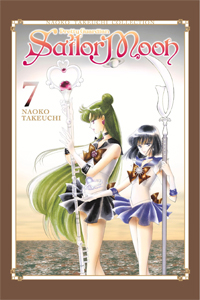
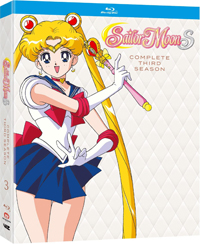
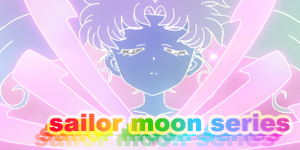
sailor moon crystal anime episode guide
sailor moon 90s anime episode guide
live action sailor moon tv series
sailor moon musicals
sailor moon manga
-- more -->

sailor moon characters
sailor moon locations
sailor moon voice actor interviews
sailor moon attacks
moonie mailbag
-- more -->
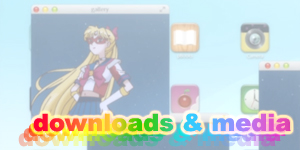
sailor moon podcasts
sailor moon desktop wallpapers
sailor moon mobile wallpapers
sailor moon avatars
sailor moon christmas content
-- more -->
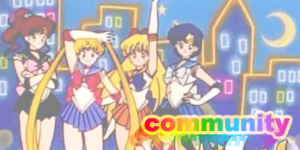
|
Stay up to date with all of the latest Sailor Moon news and site updates by connecting with me on some (or all) of the below social networks and platforms.
|



